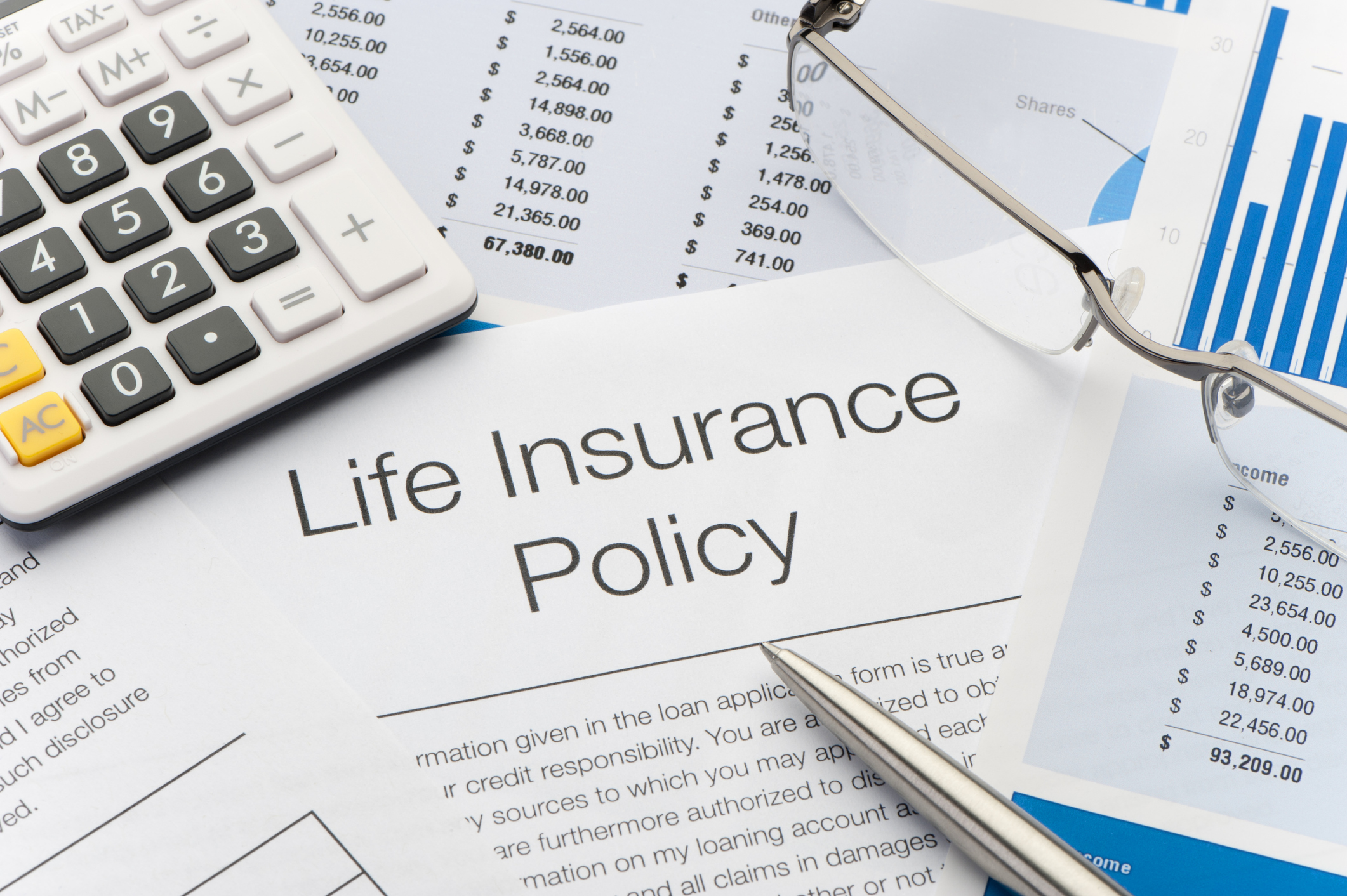What Is Term Life Insurance?
Term life insurance offers affordable coverage for a set period. Here's how it works and when it makes sense to buy a policy.


A life insurance policy can provide your family with financial support after you die. Life insurance can help your beneficiaries with funeral costs, mortgage payments and other expenses.
Term life insurance, the most common type of life insurance policy, also tends to be one of the least expensive options.
If you want peace of mind knowing your family will have financial support if you pass, a term life policy is one potential solution, but it's important to make sure you understand how the policy works and whether it's the right move for your family.
From just $107.88 $24.99 for Kiplinger Personal Finance
Become a smarter, better informed investor. Subscribe from just $107.88 $24.99, plus get up to 4 Special Issues

Sign up for Kiplinger’s Free Newsletters
Profit and prosper with the best of expert advice on investing, taxes, retirement, personal finance and more - straight to your e-mail.
Profit and prosper with the best of expert advice - straight to your e-mail.
What is term life insurance?
Term life insurance provides coverage during a specific period of time, such as 10, 20 or 30 years. If you pass away during that term and you're up to date on your policy payments, your insurance will pay a death benefit to your beneficiaries.
If you pass away outside of that term and you haven't renewed or extended your coverage, your beneficiaries won't receive a benefit.
How does term life insurance work?
When you buy a term life insurance policy, you're able to choose your term length. Most terms are between 10 and 30 years, but you'll usually pay higher premiums for a longer term.
You can also choose your death benefit amount. Determining how much life insurance you need is a personal choice and you'll need to consider factors like any savings your family has and the types of expenses your beneficiaries might face after your death.
Unlike other types of life insurance, like whole life insurance, term life insurance doesn't have a cash value component, so you're not able to borrow from or withdraw your benefit.
If you die during the policy term, your life insurance beneficiaries will receive a benefit. They can use that benefit for expenses, including funeral costs, daily living expenses, mortgage payments, future retirement needs, education expenses and more.
You can choose one or multiple beneficiaries, and while it's common for them to be family, beneficiaries can also be friends, a trust or a charity.
If you're still alive at the end of the policy term, your policy will end without a benefit being paid out. In some cases, you may have the option to convert the term policy into a permanent policy at the term end.
Other policies may give you the option to renew the policy, but you'll usually have to complete a medical exam and will pay higher premiums on the new renewed policy.
Alternatively, some life insurance policies include a return of premium feature that means you can have some or all of your premiums returned to you if you outlive the term. These policies tend to have much more expensive premiums than policies that don't include a return of premium feature.
What types of term life insurance exist?

There are several different types of term life insurance policies. All of these policies provide a specified death benefit if you die during the policy term, but there are some key differences between how they work.
- Level term: Level term policies, which are also called level premium policies, are the most common type of term life insurance. With these policies, your premium remains the same during the entire term, and your death benefit is a fixed amount.
- Decreasing term: Decreasing term policies feature a death benefit that gradually declines each year, but the premium stays the same during the entire policy's term.
- Increasing term: An increasing term policy features a benefit that increases over the policy's term, though the premium stays the same.
- Yearly renewable term: Yearly renewable term policies feature a one-year term, and you can renew the policy each year. However, the premiums will increase as you age, so these policies can quickly get expensive.
How much does term life insurance cost?
Since term life insurance provides a benefit only during a limited amount of time, it tends to be one of the least expensive types of life insurance. This type of insurance can be ideal if you're looking for coverage at a low cost.
Many factors will affect your term life insurance policy cost, including the amount of coverage and duration of the term that you choose. Your gender plays a role, and males will have slightly higher premiums than females.
Your health also affects your rates. When you buy a policy, you'll need to answer some questions about your health, and you may be required to complete a medical exam.
If you're older, you'll pay higher premiums, and health issues, unhealthy habits like nicotine and tobacco use, medications you're taking and even your family history can affect your rates.
When does it make sense to choose term life insurance?
Term life insurance has many advantages, but it also has some drawbacks.
Choosing a term life insurance policy makes sense in several situations:
- You need the most affordable coverage. A term life policy is usually more affordable than any sort of permanent life insurance, especially if you're young and healthy.
- You need temporary coverage. If your family is paying off debt or you want to have life insurance coverage until your children are grown, a 20-year term policy can give you that temporary coverage until your family is more financially stable.
- You can't afford permanent life insurance yet. A term life insurance policy can be a more affordable way to start your coverage, like when you're early on in your career and will have a higher income when the policy ends. If you choose a policy that's convertible, you can convert it into a permanent policy at the end of the term.
What other types of life insurance are available?
There are many advantages to term life insurance, but it's a temporary policy, and you need to make sure that it's right for your budget and goals.
There are several common types of permanent life insurance policies available, too.
- Whole life insurance policies provide coverage during your entire life, as long as you make your payments. These types of policies build cash value as you pay into them, and you can borrow against or withdraw from that cash value if needed, such as if you need to make an emergency home repair.
- Universal life insurance works similarly to a whole life policy, but it offers a bit more flexibility. With a universal life insurance policy, you can make adjustments to your premiums and death benefit.
- Variable life insurance features an investment component, so you can invest the policy's cash value in stocks and bonds. That investment component can help the benefit to grow, but if your investments don't do well, you could lose money.
The premiums for these types of policies vary, so it's helpful to get a quote for the type of policies you're interested in.
Think carefully about your personal financial situation, your health, your family's expenses and the type of financial support you want a policy to provide when deciding which option is best for you.
Get more insurance tips and other personal finance insights straight to your inbox. Subscribe to our daily newsletter, A Step Ahead.
Related Content
Profit and prosper with the best of Kiplinger's advice on investing, taxes, retirement, personal finance and much more. Delivered daily. Enter your email in the box and click Sign Me Up.

Paige Cerulli is a freelance journalist and content writer with more than 15 years of experience. She specializes in personal finance, health, and commerce content. Paige majored in English and music performance at Westfield State University and has received numerous awards for her creative nonfiction. Her work has appeared in The U.S. News & World Report, USA Today, GOBankingRates, Top Ten Reviews, TIME Stamped Shopping and more. In her spare time, Paige enjoys horseback riding, photography and playing the flute. Connect with her on LinkedIn.
-
 The Santa Claus Rally Officially Begins: Stock Market Today
The Santa Claus Rally Officially Begins: Stock Market TodayThe Santa Claus Rally is officially on as of Wednesday's closing bell, and initial returns are positive.
-
 How to Leave Different Amounts to Adult Children Without Causing a Rift
How to Leave Different Amounts to Adult Children Without Causing a RiftHere’s how to leave different amounts to adult children without causing a family rift.
-
 My Retirement Learning Curve, 1 Year In
My Retirement Learning Curve, 1 Year InA retiree checks in with what they wish they knew early on and what they've changed about their plan one year in.
-
 How to Leave Different Amounts to Adult Children Without Causing a Rift
How to Leave Different Amounts to Adult Children Without Causing a RiftHere’s how to leave different amounts to adult children without causing a family rift.
-
 Introducing Your CD's Edgier Cousin: The Market-Linked CD
Introducing Your CD's Edgier Cousin: The Market-Linked CDTraditional CDs are a safe option for savers, but they don't always beat inflation. Should you try their counterparts, market-linked CDs, for better returns?
-
 How to Protect Yourself and Others From a Troubled Adult Child: A Lesson from Real Life
How to Protect Yourself and Others From a Troubled Adult Child: A Lesson from Real LifeThis case of a violent adult son whose parents are in denial is an example of the extreme risks some parents face if they neglect essential safety precautions.
-
 Here's How Much You Can Earn with a $100,000 Jumbo CD
Here's How Much You Can Earn with a $100,000 Jumbo CDYou might be surprised at how fast a jumbo CD helps you reach your goals.
-
 A Financial Planner Takes a Deep Dive Into How Charitable Trusts Benefit You and Your Favorite Charities
A Financial Planner Takes a Deep Dive Into How Charitable Trusts Benefit You and Your Favorite CharitiesThese dual-purpose tools let affluent families combine philanthropic goals with advanced tax planning to generate income, reduce estate taxes and preserve wealth.
-
 How Financial Advisers Can Best Help Widowed and Divorced Women
How Financial Advisers Can Best Help Widowed and Divorced WomenApproaching conversations with empathy and compassion is key to helping them find clarity and confidence and take control of their financial futures.
-
 Your Guide to Buying Art Online
Your Guide to Buying Art OnlineFrom virtual galleries to social media platforms, the internet offers plenty of places to shop for paintings, sculptures and other artwork without breaking the bank.
-
 I'm 59 With $1.7 Million Saved and Just Lost My Job. Should I Retire at 59½, or Find New Work?
I'm 59 With $1.7 Million Saved and Just Lost My Job. Should I Retire at 59½, or Find New Work?We asked professional wealth planners for advice.